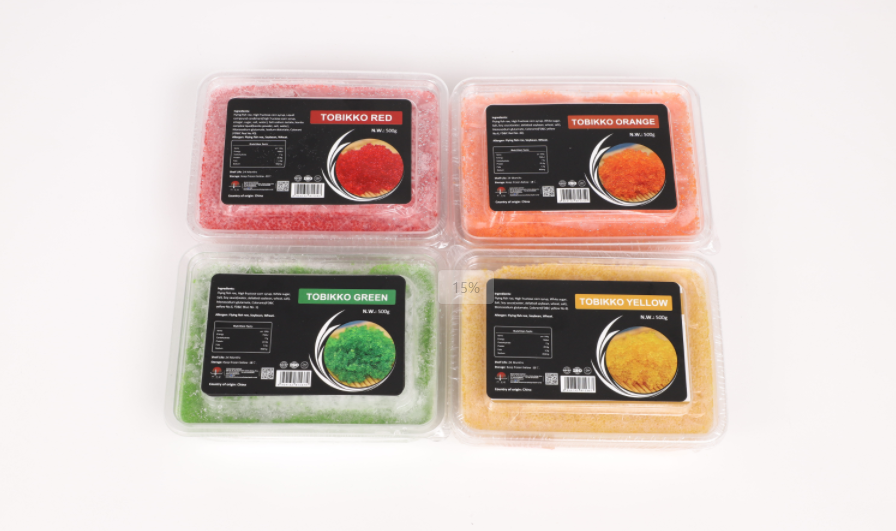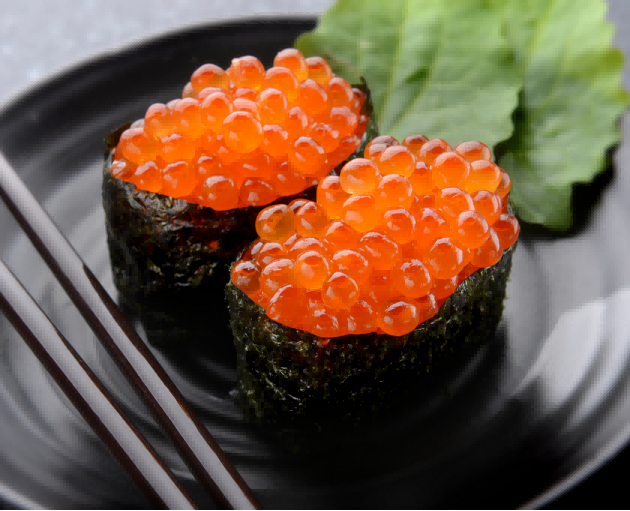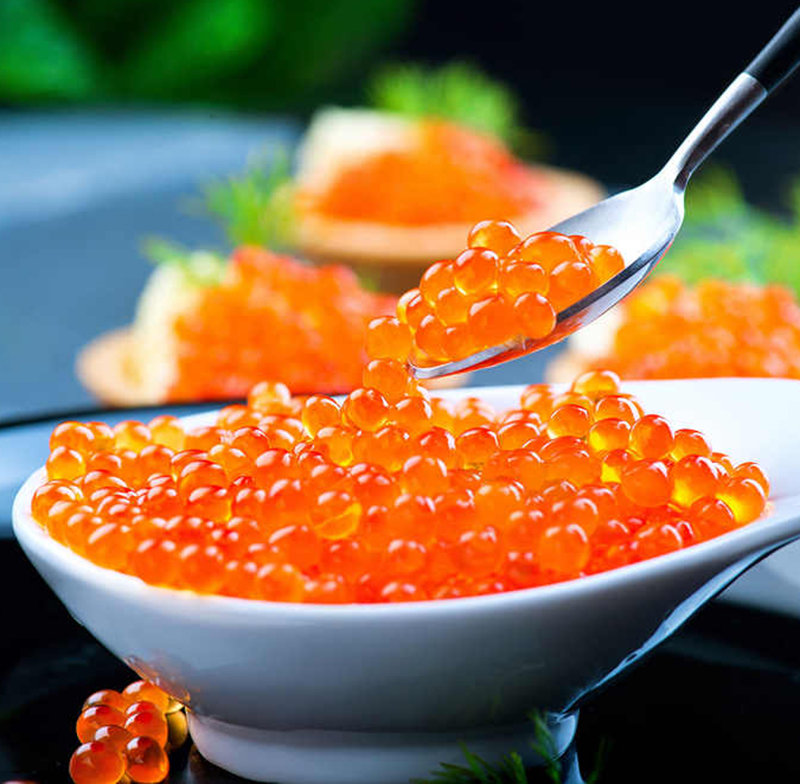Tobiko is the Japanese word for flying fish roe, which is crunchy and salty with a hint of smoke. It’s a popular ingredient in Japanese cuisine as a garnish to sushi rolls.
What is tobiko (flying fish roe)?
You’ve probably noticed that there are some bright-colored stuff sitting on top of some Japanese sashimi or sushi rolls at restaurant or supermarket. Most of the time, these are tobiko eggs or flying fish roe.
Tobiko eggs are small, pearl-like blobs that range from 0.5 to 0.8 mm in diameter. Natural tobiko has a red-orange color, but it can easily take on the color of another ingredient to become green, black or other colors.
Tobiko is larger than masago or capelin roe, and smaller than ikura, which is salmon roe. It’s often used in sashimi, maki or other Japanese fish dishes.

What does tobiko taste like?
It has a mild smoky and salty taste and slightly sweeter than other types of roe. With a crunchy but soft texture, it complements rice and fish very well. It’s quite satisfying of biting into tobiko garnished sushi rolls.
Tobiko’s Nutrition value
Tobiko is a good source of proteins, omega-3 fatty acids, and selenium, a mineral responsible for the production of antioxidants. However, due to its high levels of cholesterol, it should be taken in moderation.


Types of tobiko and different colors
When infused with other ingredients, tobiko can take on its color and flavor:
Black tobiko: with squid ink
Red tobiko: with beet root
Green tobiko: with wasaki
Yellow tobiko: with yuzu, which is a Japanese citrus lemon.
How to store tobiko?
Tobiko can be stored in the freezer for up to 3 months. When you need to use it, just use a spoon to take out the amount you need into a bowl, let it thaw and put the rest back into the freezer.
What’s the difference between tobiko and masago?
Both tobiko and masago are fish roe that are common in sushi rolls. Tobiko is flying fish roe while masago is egg of Capelin. Tobiko is larger, brighter with more flavor, as a result, it’s much more expensive than masago.
How to make tobiko sushi?
1.First fold the nori sheet in half to split it and place half of the nori on top of the bamboo mat.
Spread cooked sushi rice evenly over nori and sprinkle sesame seeds on top of rice.
2.Then flip everything so that rice is facing down. Place your favorite fillings on top of the nori.
Start rolling using your bamboo mat and firmly keep the roll in place. Apply some pressure to tighten it up.
3.Remove the bamboo mat, and add tobiko on top of your sushi roll. Place a piece of plastic wrap on top, and cover with the sushi mat. Squeeze gently to press the tobiko around the roll.
4.Then remove the mat and keep the plastic wrap, then slice the roll into bite-size pieces. Remove the plastic wrap and enjoy!
Post time: Jan-08-2025